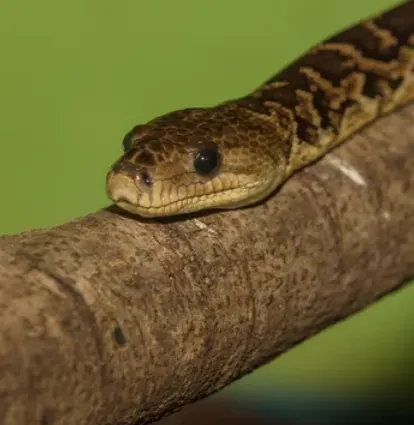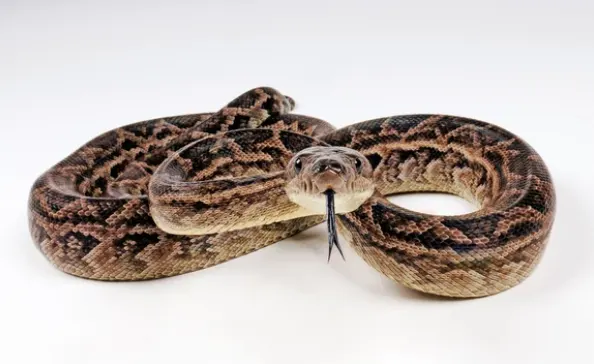The Cuban Boa (Chilabothrus angulifer) is a truly captivating reptile, known for being the largest native predator on the island of Cuba. This remarkable snake, which can grow up to an impressive 21 feet long, showcases unique hunting tactics and plays a crucial role in its ecosystem. In this post, we’ll explore everything you need to know about the Cuban Boa, from its habitat and behavior to its physical characteristics and conservation status.

Table of Contents
Habitat and Distribution
Where Does the Cuban Boa Live?
The Cuban Boa is endemic to Cuba and some surrounding islands. This species has adapted to a wide range of habitats, including:
- Tropical rainforests
- Evergreen forests
- Forest swamps
- Semi-deciduous forests
- Coastal scrublands
- Sugar cane plantations
Where to Spot a Cuban Boa
These snakes often take refuge in caves, tree holes, and high up in the trees. Caves are particularly favored, especially those with bat colonies, as bats are one of their favorite prey items.
Unique Hunting Behavior
The Cooperative Hunter
One of the most fascinating aspects of the Cuban Boa is its cooperative hunting behavior—a rarity among snakes.
- How It Works: In 2017, researchers observed Cuban Boas working together to capture prey, particularly bats. The snakes form a “curtain” at the entrance of caves, positioning themselves strategically to catch bats as they exit or enter. This cooperative hunting demonstrates an advanced level of social interaction and strategy.
Opportunistic Predators
The Cuban Boa is also an opportunistic hunter. They adjust their hunting style based on their environment:
- Near Human Activity: Nocturnal, relying on ambush tactics.
- In Wild Forests: Active both day and night, employing a mix of ambush and active hunting strategies.
Physical Characteristics
What Does the Cuban Boa Look Like?
The Cuban Boa is a robust and muscular snake, designed for power and precision. Key characteristics include:
- Heavy Build: Ideal for constriction.
- Sharp, Backward-Curving Teeth: Perfect for gripping prey, particularly useful for catching bats mid-flight.
- Labial Pits: heat-sensing pits on their lips to detect the body heat of warm-blooded prey.
Color Variations
There are two distinct color forms of the Cuban Boa:
- Eastern Boas: Pale gray or tan base color with pale brown markings.
- Western Boas: Dark caramel base color with nearly black markings.
These intricate geometric patterns along their backs and sides make the Cuban Boa a strikingly beautiful reptile.
Reproduction and Lifespan
How Do Cuban Boas Reproduce?
Cuban Boas, like other members of the Boa family, give birth to live young rather than laying eggs.
- Breeding Season: Between April and June.
- Mating Competition: Males compete for the chance to mate, and females only reproduce every other year.
- Gestation: 5 to 6 months, influenced by ambient temperature.
- Litter Size: Ranges from 2 to 30 young, with larger females producing larger litters.
Lifespan
Cuban Boas can live over 20 years. They reach sexual maturity between 3 to 5 years of age, with a slow reproductive rate, making them vulnerable to rapid environmental changes.
Conservation Status and Threats
Are Cuban Boas Endangered?
The Cuban Boa is currently listed as “Least Concern” on the IUCN Red List. However, it faces several threats:
- Habitat Destruction: Due to urban expansion, tourism development, and nickel mining.
- Invasive Species: Mongooses, pigs, dogs, and cats prey on young boas.
- Human Threats: Some snakes are killed out of fear or for use in traditional practices like Santeria.
The Role of the Cuban Boa in the Ecosystem
Despite these threats, the Cuban Boa plays a vital role in maintaining the balance of its ecosystem by controlling populations of rodents and other small mammals.
Human Interaction
Cuban Boas and People
The Cuban Boa has a complex relationship with humans. While generally not dangerous to people, their presence near human settlements can lead to conflict.
- Opportunistic Feeders: They have been known to prey on livestock and pets, which can upset local communities.
- Misunderstanding and Fear: Some boas are killed to prevent them from taking livestock, highlighting the need for education and conservation efforts.

The Cuban Boa is a remarkable example of nature’s adaptability and resilience. From its cooperative hunting behavior to its varied habitat preferences and striking appearance, this snake is a true wonder of the natural world.
While the species currently enjoys a stable population, conservation efforts are crucial to preserving not just the Cuban Boa but the intricate balance of life in Cuba’s diverse habitats. Through education, research, and sustainable practices, we can ensure that the Cuban Boa remains a symbol of Cuba’s rich natural heritage for generations to come.
Did You Know?
Cuban Boas can grow as long as 21 feet, making them the longest of the Chilabothrus group of West Indies boas.
- Enchi Ball Python: A Unique and Stunning Morph of Python regius - March 27, 2025
- Emerald Tree Monitor: The Enigmatic Green Guardian of the Rainforest - March 26, 2025
- The Egyptian Cobra (Naja haje): A Fascinating Serpent - March 25, 2025
